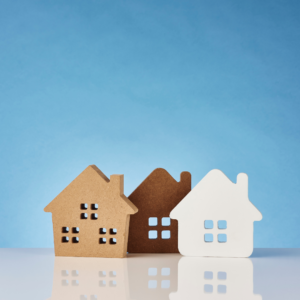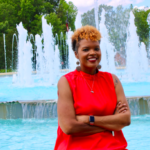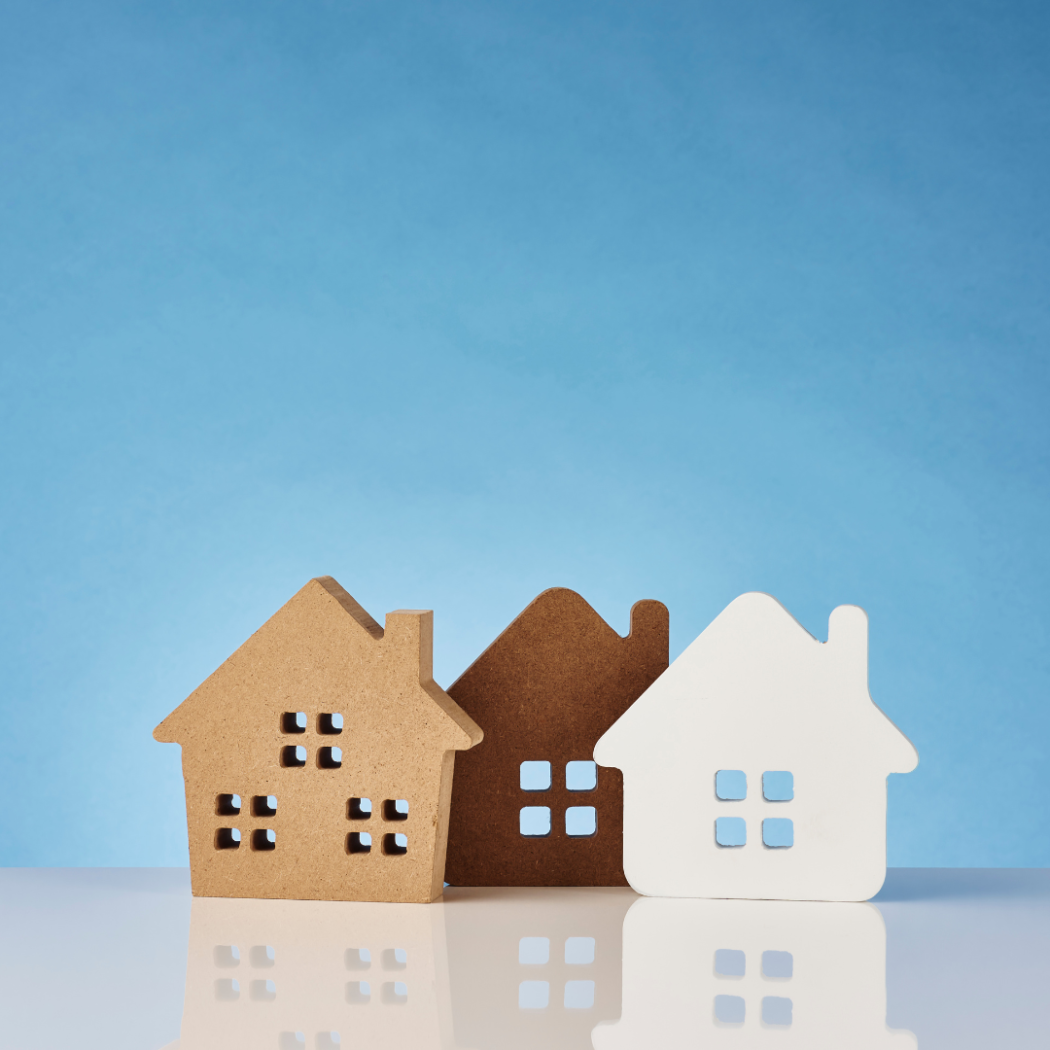 Homelessness and the affordable housing crisis are disproportionately affecting specific communities in North Carolina. Across several counties many of the people facing homelessness are women and children who have been evicted, are fleeing domestic violence, people with disabilities, and/or those who are having financial difficulties and cannot obtain housing on their own. Though many times the people we see featured or discussed in news articles are white men, the face of homelessness has continued to change over time. While data collection was altered due to the COVID-19 pandemic, the last three years provide us with clear indications of how the face of homelessness differs in actual numbers from what we often assume or are shown.
Homelessness and the affordable housing crisis are disproportionately affecting specific communities in North Carolina. Across several counties many of the people facing homelessness are women and children who have been evicted, are fleeing domestic violence, people with disabilities, and/or those who are having financial difficulties and cannot obtain housing on their own. Though many times the people we see featured or discussed in news articles are white men, the face of homelessness has continued to change over time. While data collection was altered due to the COVID-19 pandemic, the last three years provide us with clear indications of how the face of homelessness differs in actual numbers from what we often assume or are shown.
The recently released Annual Homeless Assessment Report (AHAR) “cast light on the severe racial inequities among people who experience homelessness. Black and Indigenous people continue to be dramatically overrepresented in homelessness systems. People who identify as Black made up 12 percent of the total U.S. population but 37 percent of all people experiencing homelessness and half of all people experiencing homelessness as members of families with children. There was also a two percent increase in unsheltered homelessness among people who identify as Black.”
Homelessness in North Carolina
2019 North Carolina data indicates that – of the more than 5,400 people experiencing homelessness and staying in emergency shelters – 59% were male and 41% were female. The majority of those interviewed identified as Black or African-American (57%) or white (37%). 33% of those who were experiencing unsheltered homelessness identified as female and 67% identified as male. More than 400 of those in emergency shelters and more than 200 of those experiencing unsheltered homelessness were victims of domestic violence. (HUD)
2020 North Carolina data indicates that – of the more than 5,000 people experiencing homelessness and staying in emergency shelters – 58% were male and at least 42% were female. The majority of those interviewed identified as Black or African-American (56%) or white (39%). 31% of those who were experiencing unsheltered homelessness identified as female and 69% identified as male. More than 500 of those in emergency shelters and more than 150 of those experiencing unsheltered homelessness were victims of domestic violence. (HUD)
2021 North Carolina data indicates that – of the more than 4,500 people experiencing homelessness and staying in emergency shelters – 56% were male and at least 43% were female. Again, the majority of those interviewed identified as Black or African-American (62%) or white (33%). More than 400 of those in emergency shelters were victims of domestic violence. (HUD) (Data pertaining to unsheltered homelessness was not consistently reported across the nation in 2021 due to COVID-19 concerns.)
The aforementioned data shows us that – while the number of people in shelters has decreased, the percentage of women in shelters continues to increase. We also see that the majority of people identifying as homeless are Black or African-American and that many of those interviewed have previously been victims of domestic violence. It is rare that we see this information disclosed when we are discussing issues pertaining to homelessness or who is impacted by it. People frequently overlook homeless youth and/or homeless families altogether, preferring to make assumptions about who is or is not homeless and why their lack of housing must be their fault.
One could assume that – because the majority of North Carolina residents are white – the utilization of white people as the face of homelessness could be a marketing tactic to convince more people to care about the issues of homelessness and houselessness, but – in my opinion – this is actually a form of erasure, which makes it exceptionally more difficult for people who are not white and/or male to get the assistance and services that they need. If we are led to believe that certain people are not or cannot be homeless, we find ourselves skeptical when those people show up in spaces requesting assistance. Additionally – where those people look like us – not seeing them discussed as one of the many faces of homelessness may also give us a false sense of security about how far removed we are from homelessness. A domestic violence incident, an unforeseen medical bill, a familial death, an increase in rent, or an unexpected job loss can all lead to sudden homelessness.
Homelessness & Domestic Violence
For purposes of discussing people experiencing homelessness, domestic violence includes dating violence, sexual assault, and stalking.
According to the data provided in the North Carolina 2021 – 2025 Consolidated Plan, “Domestic violence is consistently identified as a significant factor in homelessness… 92% of homeless women report having experienced severe physical or sexual violence at some point in their lives, and 50% of all homeless women report that domestic violence was the immediate cause of their homelessness. Domestic violence, homelessness, and housing insecurity are undeniably linked, as lack of safe and affordable housing is often reported as one of the primary barriers survivors of domestic violence face when they choose to leave an abusive partner. There were a total of 744 survivors of domestic violence experiencing homelessness during the January 2019 PIT count. The majority (534) of these survivors were in either transitional housing or emergency shelter and 210 were unsheltered. A report from the March 2020 Domestic Violence Counts Report for North Carolina claims that, in one day, domestic violence victims made 125 requests for services that could not be provided because programs lacked the resources to meet the needs; these requests were for emergency shelter, housing, transportation, childcare, legal representation, and other needs. Of those unmet requests, 86 were for housing or emergency shelter.”
“Even before the pandemic, Black women faced a crisis of violence. Data from a 2017 study by the US Centers for Disease Control and Prevention concluded that Black women were significantly more likely than white women to be killed by an acquaintance. More than half of all homicides among women—about 55%—were related to intimate partner violence, or IPV (domestic violence perpetrated by a spouse or romantic partner). And a report by a gun safety advocacy group, based on FBI data from the years 2013 to 2017, found that Black women were twice as likely to be shot and killed by an intimate partner as white women—and Black women between the ages of 18 and 34 were almost three times as likely. US Census data suggests that the pandemic affected Black households more than white households in terms of the cumulative effects of job loss, food insufficiency, and financial insecurity.
Economic and health disparities can put someone at greater risk for domestic violence and make it harder to get help, says Karma Cottman, who helms the National Center on Violence Against Women in the Black Community (also known as Ujima), based in Washington, DC. “What we saw, and to some degree still are seeing, are the layers of vulnerability that exist for Black women and for the Black community that were underscored by the pandemic,” Cottman says.” (MIT Technology Review)
Black Women & Homelessness
“[D]iscrimination in housing, education, employment, criminal justice, and health care have led to inequitable access to wealth and economic opportunity and to a greater likelihood of experiencing homelessness.” (USICH) “Most people of color are overrepresented in the homeless population.” (USICH)
While HUD and statewide data does not report the number of Black women interviewed during various data collections and Point-In-Time Counts, one can surmise that many of the women interviewed that are experiencing sheltered and/or unsheltered homelessness are Black women based on the percentages of representation of female interviewees and Black or African-American interviewees. In my own work with clients experiencing homelessness, I noted that the majority of people that I worked with were Black women, typically with at least one child. Oftentimes they had experienced domestic violence at some point and were struggling with maintaining employment due to issues such as a lack of affordable child care and/or the loss of reliable transportation. Working with these clients provided me with countless examples of how the costs of rent, utilities, application fees, administrative fees, and security deposits made it seemingly impossible for these clients to obtain and maintain housing. The financial expectations coupled with varying (and sometimes ridiculous) approval requirements for renting prevented many clients from being able to get approved for housing, even if they had the financial means to cover the other aforementioned fees.
For many Black women, some form of assistance (not always financial) is needed to assist them in getting approved for and stabilized in housing. Many Black women in North Carolina are not successful in their pursuit for housing without the help of various financial assistance programs, credit counseling, and/or partnership with programs intended to ensure that fair housing practices and/or Landlord-Tenant laws are followed.
“Anti-Black racism continues to be ignored as a root cause of homelessness, and Black people experiencing homelessness continue to be inadequately protected from housing discrimination, over-policing, criminalization of poverty, and other systemic forces that contribute to their overrepresentation in the total population of people experiencing homelessness.” (USICH)
Previously we discussed erasure and how that negatively impacts people’s ability to get services. There are countless examples of how that is the case for many Black women. Despite data pertaining to the number of advanced degrees typically held by Black women, there is a clear indication that Black women are at a financial disadvantage throughout the nation. In September 2022, it was announced that it takes 264 additional days into the new year for Black women to make what white, non-Hispanic men made the year prior. For every $1.00 made by a white, non-Hispanic male, Black women working full-time, year-round make only 67 cents. (Equal Pay Today) This fact alone – without considering things like student loan debt and family size – makes it even more difficult for many Black women to afford housing on their own, especially where they are the primary or sole provider. The assumption of what needs someone with an advanced degree should or should not have also makes it all the more difficult for Black women to obtain assistance and resources.
It is also overlooked that many Black women and/or Women of Color are responsible for family members or kin (some of whom may be disabled) who are not in their household or who are not typically seen as part of the standard household unit. This is frowned upon by some landlords and/or stipulated against in many lease agreements. Some women find themselves evicted for providing care for others in their home in contravention of their lease agreement or opt not to move into housing where all members of their chosen family cannot go with them. The result of both of these situations tends to be homelessness.
In addition to being survivors of domestic violence, oftentimes Black women and their children/dependents are also members of other communities who face housing challenges. One such community is that of people with disabilities and/or those who are not able-bodied.
People with Disabilities & Homelessness
In August 2020 the National Disability Institute released “Race, Ethnicity and Disability: The Financial Impact of Systemic Inequality and Intersectionality.” This research brief discusses a variety of issues impacting the disabled community. One such issue is housing and affordable housing (or housing that does not make the household cost-burdened).
“Households that spend more than 30 percent of their income are considered ‘costs burdened.’ Forty-four percent of households with one or more members with a disability are cost burdened compare with 34 percent of those without a disability. The rate of cost-burden varies by race and ethnicity with more than 50 percent of Black and Latinx Households with a disability spending more than 30 percent of their income on housing compared with 42 percent of white households with a disability. COVID-19 has put these already cost-burdened households at a higher risk of foreclosure or eviction.” (National Disability Institute)
People with disabilities, much like elderly people, are typically on a fixed monthly income. As a result, a lack of affordable housing in their community is a difficult problem for them to overcome. Stipulations around who can receive disability payments and also maintain employment makes it difficult for those classified as disabled to increase the money available to them for the costs of rent. A lack of affordable housing can make it all the more difficult to re-establish or find alternate housing following any of the aforementioned disruptions that can occur for people personally or for anyone on a fixed income who may need certain accommodations (such as being on the first floor, having elevator access, or having wider door frames for wheelchairs).
Affordable Housing
According to the North Carolina Housing Coalition, “Housing is affordable when it comprises no more than 30% of the family’s budget. Families that spend more than this on housing are cost burdened.” (NCHC)
The National Low Income Housing Coalition (NLIHC) reports that, “Across North Carolina, there is a shortage of rental homes affordable and available to extremely low income households (ELI), whose incomes are at or below the poverty guideline or 30% of their area median income (AMI). Many of these households are severely cost burdened, spending more than half of their income on housing. Severely cost burdened poor households are more likely than other renters to sacrifice other necessities like healthy food and healthcare to pay the rent, and to experience unstable housing situations like evictions.” The 2022 NLIHC North Carolina Housing Profile indicates that 25% (or 347,827) of renter households are extremely low income. It is also indicated that there is a shortage of approximately 195,661 rental homes that are affordable and available for extremely low income renters. The maximum income of an extremely low income four-person household is $26,200.00 annually. The annual household income needed to afford a two-bedroom rental home at HUD’s Fair Market Rent rate is $39,897.00 annually. This is a difference of more than $13,600.00 per year. The National Low Income Housing Coalition (NLIHC) further reports that a person working in a minimum wage position (making $7.25 per hour) will need to work 90 hours per week to afford a modest one-bedroom rental home at Fair Market Rent. (NLIHC)
Though the annual income is increasing, so are the costs associated with housing, which thereby makes housing unaffordable for many North Carolinians. This report was “brought home” for many in the central part of the state in October 2021 when The Burlington Times-News shared that only 11% of Alamance County employees were paid enough to afford the rising cost of living as a sole provider. (Burlington Times-News)
As funds distributed to the states during the COVID-19 pandemic and as part of the American Rescue Plan are exhausted or caught up in politics and promises, there are fewer funds available and more egregious hoops that people must jump through to remain in their homes, to obtain space in a shelter, or to find permanent, stable housing after periods of homelessness, eviction, or displacement. Similarly to the lack of affordable housing, there are also limitations on shelter space for individuals and families experiencing homelessness. Funding limitations and stipulations, as well as space and staffing issues make it difficult for shelters to create or maintain spaces that can serve the sheer number of people experiencing homelessness, especially families or people fleeing domestic violence. As a result, many people remain on shelter waitlists indefinitely and are forced to sleep in places not meant for habitation, such as their cars or encampments in the woods.
“As homelessness has become more visible, there has been a troubling rise in state and local laws that criminalize and exacerbate homelessness by making it illegal for people without a home to do certain activities in public that are otherwise legal in the setting of a home: sleeping, sitting, eating.” (USICH)
Homelessness and housing affordability will continue to remain an issue in North Carolina as long as we overlook so many of the different types of people that are experiencing the many aspects of this housing crisis. It is important to acknowledge the different faces of homelessness – the ones that are not white, the ones that are not male, the ones that are not cisgender or able-bodied – in order for us to fully understand what this epidemic looks like and the different approaches it requires to ensure that we are truly offering services and opportunities to all of the people that need them.
If you are interested in learning more about housing, homelessness, and cost burdens in your county, I encourage you to look at the County Profiles provided here.
 Shereá D. Burnett, J.D., VSP is an LGBTQIA+ Afro-Indigenous woman who is passionate about literacy programming for children, promoting the work done by Black and Indigenous women, and raising awareness about the issues (such as homelessness) that are impacting marginalized communities. Learn more about the work that Shereá is doing in her community by visiting www.thiswomanswords.co.
Shereá D. Burnett, J.D., VSP is an LGBTQIA+ Afro-Indigenous woman who is passionate about literacy programming for children, promoting the work done by Black and Indigenous women, and raising awareness about the issues (such as homelessness) that are impacting marginalized communities. Learn more about the work that Shereá is doing in her community by visiting www.thiswomanswords.co.

There are no comments
Add yours